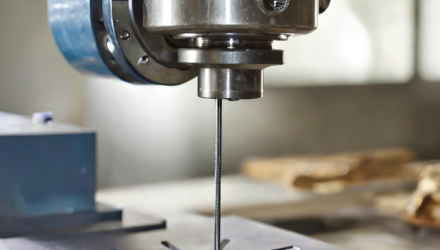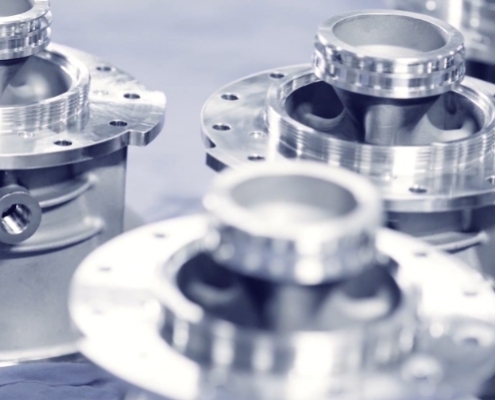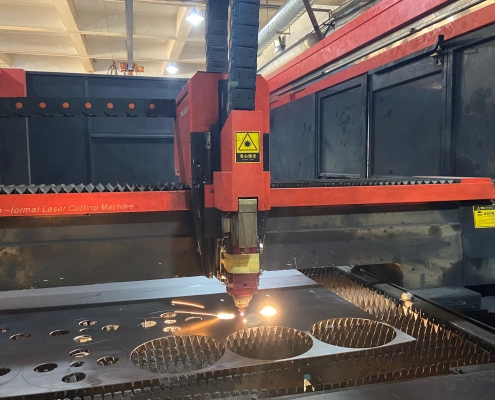EDM Machining: A Comprehensive Guide
Are you looking for a machining process that achieves incredible precision while handling even the hardest materials?
EDM machining is a cutting-edge process that uses controlled sparks to shape materials without physical contact. It’s ideal for manufacturing complex parts with high accuracy, especially in industries like aerospace, medical, and automotive.
Let’s dive deeper into how EDM machining works, its types, and its benefits.
EDM Machining: An Explanation
Precision is the hallmark of modern manufacturing, and EDM machining is at the forefront of this transformation. This advanced process, also known as electrical discharge machining. By harnessing the power of electrical sparks, EDM solutions can achieve complex geometries that traditional methods cannot replicate.
EDM machining works without mechanical force, making it ideal for delicate or ultra-hard materials. Submerged in a dielectric fluid, the electrode or wire generates controlled electrical discharges that gradually erode the workpiece. This non-traditional process has become a cornerstone of industries requiring precision and durability.
The Three Types of EDM
To cater to diverse industrial needs, EDM technology is divided into three main types. Each type offers unique advantages for specific applications.
| Type of EDM | Description | Key Applications | Advantages |
|---|---|---|---|
| Wire EDM | Uses a thin, electrically charged wire to slice through materials. | Intricate shapes, fine details for aerospace and medical industries. | Exceptional precision, tight tolerances. |
| Sinker EDM | Utilizes a shaped electrode to create cavities or forms in the workpiece. | Mold-making, die-casting, deep or 3D geometries. | Excellent repeatability, handles complex designs. |
| Small Hole EDM | Specializes in micro-drilling with high precision and minimal distortion. | Cooling holes in turbine blades, tiny orifices in fuel injectors. | Ideal for high aspect ratio drilling. |
Advantages and Limitations of EDM Machining
Every machining method has its strengths and challenges, and EDM machining is no exception. Its unique characteristics often make it the preferred choice for applications where precision and material integrity are critical.
Advantages of EDM Machining
1. Ability to Cut Hard Materials
EDM machining excels in processing materials that are notoriously difficult to machine using traditional methods. These include titanium, tungsten carbide, Inconel, and hardened steel. This capability is invaluable in industries like aerospace, medical, and automotive, where hard materials are often required.
2. Exceptional Precision and Tolerances
The process delivers exceptional precision, achieving tolerances as tight as ±0.001 mm. This makes EDM applications ideal for producing components with intricate designs and high dimensional accuracy, such as surgical tools and optical equipment.

3. No Mechanical Stress or Deformation
Unlike traditional machining that exerts physical force on the workpiece, EDM systems use electrical discharges. This eliminates mechanical stress, thermal distortion, or cracking, making it ideal for delicate or complex materials.
4. Capability to Machine Complex Shapes
With EDM technology, manufacturers can create complex geometries that are impossible with conventional methods. These include sharp internal corners, deep cavities, thin walls, and intricate patterns required in mold-making or precision engineering.
5. Minimal Tool Wear
Because there is no direct contact between the tool and the workpiece, the electrode in EDM machining experiences minimal wear, which contributes to consistent results over time.
Limitations of EDM Machining
1. Slower Processing Speeds
Compared to traditional machining methods like milling or turning, EDM processes are relatively slow. This is due to the nature of material removal by controlled electrical discharges, which can take more time for large-scale production.
2. Higher Operational Costs
The use of specialized electrodes, dielectric fluids, and the need for precise control systems contribute to higher operational expenses. Regular maintenance of EDM machinery and the replacement of consumables like wires and electrodes add to the cost.
3. Limited to Conductive Materials
One of the significant constraints of EDM machining is its reliance on electrical conductivity. Non-conductive materials, such as certain plastics or ceramics, cannot be machined using this method.
4. Surface Finish Concerns
While EDM machining offers high precision, the process can leave behind a recast layer on the machined surface. This layer may need additional finishing or polishing, depending on the application.
5. Environmental Concerns
The dielectric fluids used in EDM systems can pose environmental challenges if not properly disposed of or recycled. Modern advancements aim to mitigate these concerns, but the issue persists in some setups.
EDM Applications Across Industries
EDM solutions excel across various industries by offering unmatched precision and the ability to handle complex designs with ease.
Automotive Industry
EDM machines are essential in crafting fuel injectors, transmission parts, and molds for interior trims, where precision and durability are critical. They enable rapid prototyping and ensure high-quality results for customized automotive components.
Medical Field
The medical industry benefits from EDM machining for creating surgical tools, implants, and prosthetics with biocompatible materials. Its ability to produce tiny, intricate components ensures reliability in advanced medical devices.
Aerospace Industry
EDM technology is crucial in aerospace for manufacturing turbine blades, engine nozzles, and lightweight structural components. It handles hard materials like titanium with precision, meeting stringent safety and performance requirements.

Industrial Manufacturing
From molds and dies to specialized tooling, EDM processes deliver the precision required for injection molding, die casting, and custom industrial components, ensuring durability and detail in mass production.
Electronics Industry
For microelectronics, EDM solutions enable the creation of connectors, cooling systems, and intricate plastic molds. They meet the growing demand for smaller, more efficient electronic components.
Energy Industry
In energy, EDM machining supports the production of turbine blades, oil and gas equipment, and renewable energy components like wind turbines and fuel cells, ensuring efficiency and resilience in extreme conditions.
In Conclusion
EDM systems offer unmatched precision, the ability to machine hard materials, and handle complex geometries, making them invaluable across industries. From automotive to aerospace, medical to energy, EDM continues to drive the future of advanced manufacturing.
VMT provides diverse manufacturing solutions, including EDM, CNC machining, sheet metal fabrication, and 3D printing. Whether for prototypes, small runs, or large-scale production, we deliver high-quality parts. Contact us today for a free quote!

Frequently Asked Questions About EDM Machining
Is EDM a CNC machine?
Yes, EDM machines can operate as CNC machines, where computer numerical control automates the machining process. This ensures precise, repeatable results, especially for intricate or complex geometries. However, EDM is a distinct process that uses electrical discharges to machine conductive materials, differing fundamentally from traditional CNC machining methods like milling or turning.
What is the Basic Principle of EDM?
EDM operates by generating controlled electrical discharges between an electrode and a conductive workpiece. These sparks erode the material at the contact point, enabling high-precision shaping without direct contact. The process requires a dielectric fluid to insulate, cool, and flush away debris.
What are two types of EDM machines?
The two main types of EDM machines are Wire EDM and Sinker EDM. Wire EDM uses a thin wire to cut through materials, ideal for detailed and intricate shapes. Sinker EDM employs a shaped electrode to form cavities or complex geometries, commonly used for molds and dies.
Is EDM the same as CNC Machining?
No, EDM and CNC machining are not the same. While both can be automated with CNC, EDM removes material using electrical discharges, whereas traditional CNC machining relies on cutting tools to physically remove material. Each method serves different purposes based on material and precision needs.



